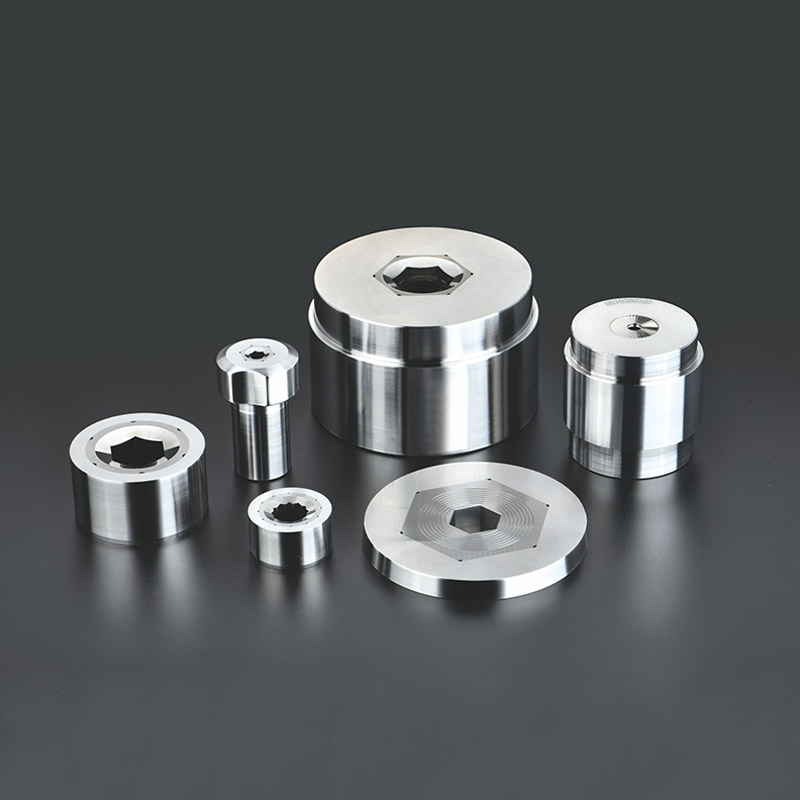Cold forging is a critical manufacturing process widely used in industries such as automotive, aerospace, and electronics for producing high-strength, high-quality metal parts. At the heart of this process lies the Cold Forging Die, a highly engineered tool responsible for shaping and forming metal components. The design and production of these dies demand extreme precision to ensure that they consistently produce parts with the required accuracy and quality.
Precision engineering plays an essential role in Cold Forging Die design, influencing several factors, including product quality, manufacturing efficiency, longevity of the die, and repeatability in production.

Importance of Precision in Cold Forging Die Design
Accuracy and Product Quality:Precision engineering in cold forging die design directly affects the accuracy of the parts produced. Cold forging involves shaping metal at room temperature, which places considerable stress on both the workpiece and the die. A precisely engineered die ensures that the metal is deformed into the exact shape required, minimizing dimensional variations and defects such as cracks, surface irregularities, or deformations.
Accurate dies are crucial in industries like automotive and aerospace, where components such as engine parts, gears, and structural elements must meet strict tolerances. The slightest deviation in part dimensions can lead to performance issues or even failure. Precision engineering ensures that the die produces parts that meet these stringent requirements, ensuring safety, reliability, and performance.
Improved Repeatability:In high-volume production environments, repeatability is key. Manufacturers need to ensure that every part produced is identical to the first one, regardless of batch size. Precision-engineered Cold Forging Dies are designed with exacting tolerances, enabling them to produce the same part repeatedly with minimal variation. This repeatability is crucial for maintaining consistency in mass production, ensuring that each part adheres to the same quality and performance standards.
Precision in die design minimizes the chances of variations in the final product due to wear or misalignment of the tool during production. The more precise the die, the more consistent the output, allowing manufacturers to maintain high-quality standards across large volumes of production.
Enhanced Tool Longevity:Cold forging dies endure significant mechanical stresses during the forging process. The forces exerted on the die can lead to wear, cracking, or even failure if the die is not designed with precision. Precision engineering takes into account factors such as material properties, stress distribution, and load-bearing capacity, ensuring that the die is robust enough to withstand these forces over extended production cycles.
Properly designed dies experience less wear and tear, meaning they can be used for longer periods before requiring maintenance or replacement. This not only reduces downtime in production but also lowers costs associated with die replacement and repair. Additionally, precision-engineered dies distribute stresses more evenly, preventing localized damage that can lead to premature failure.
Efficiency in the Manufacturing Process:A well-designed, precision-engineered die streamlines the cold forging process. The accuracy of the die ensures that less force is required to shape the metal into the desired form, reducing the overall energy consumption of the process. Precision also minimizes the need for secondary processes such as trimming or machining, as parts are produced closer to the final required dimensions and finish.
By reducing material waste, energy consumption, and the need for additional processes, precision-engineered dies contribute to more efficient and cost-effective manufacturing operations. The reduced scrap rates and enhanced production throughput make precision die design an essential factor in optimizing manufacturing efficiency.
Advanced Design Techniques and Simulation:Modern precision engineering in cold forging die design involves advanced software and simulation tools that allow engineers to model and test die performance before actual production begins. These simulations help predict how the die will behave under load, identifying potential weak points or areas of excessive stress.
By simulating the forging process, engineers can optimize the design to reduce wear, improve material flow, and ensure the die’s longevity. This predictive analysis enhances the overall quality of the die, preventing costly errors and adjustments during production. The use of computer-aided design (CAD) and finite element analysis (FEA) in precision engineering enables manufacturers to fine-tune their designs with extreme accuracy.
Meeting Industry Standards:In industries such as aerospace and automotive, components must meet stringent industry standards and regulations. Precision in cold forging die design ensures that the parts produced consistently meet these regulatory requirements. Manufacturers rely on precision dies to produce parts that adhere to strict safety, quality, and performance benchmarks, ensuring compliance with industry certifications and standards.
Precision engineering is a fundamental aspect of cold forging die design, impacting everything from product quality to manufacturing efficiency. The importance of precision cannot be overstated, as it directly affects the accuracy, repeatability, and durability of both the die and the parts it produces. By ensuring that dies are designed with meticulous attention to detail, manufacturers can produce high-quality parts that meet the strict tolerances required by industries such as automotive and aerospace.
As manufacturing technology continues to evolve, precision engineering will play an increasingly vital role in enhancing the performance of cold forging dies. Advanced design tools, simulations, and materials will allow engineers to create more efficient, durable, and accurate dies, ensuring that cold forging remains a highly effective and reliable manufacturing process for years to come.











